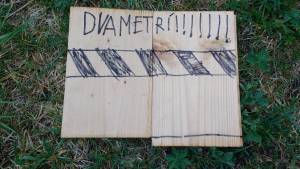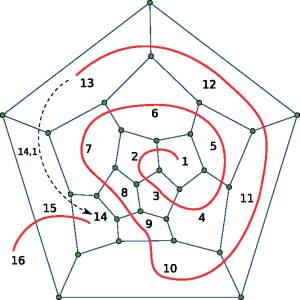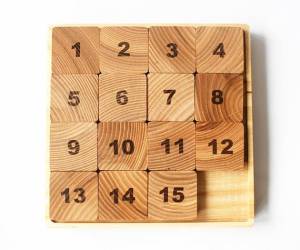This is an old revision of the document!
DVA[2]METRI
We combine 2 models.
model 1: the fullerene spiral (with failing face) in which each have an individual distance of 2 meters: musicians, singers, audience, instruments, electronics (mixing the people and non-people as one).
model 2: the sliding puzzle, or within. the spiral, the constant internal movements are regulated with this principle, in 2×2, 3×3 or 4×4 matrices, depending on the magnitude of internal movement.
Situation.
If you know the area of the field you want to perform on, with this algorithm (a spiral) it would be easy to calculate how many people can fit optimally, when standing 2m separated. The first problem occurs when one has to go to the toilet or fetch a drink at the bar. For that reason, a second algorithm is introduced that works on partial collections of people (the sliding puzzle). For the break the spiral unfolds backwards and all people pass in a row the bar and move back in with the same speed, not giving up the required 2m of distance. Interestingly, first in last out and after the break last out first in, so late visitors have a better position towards the middle. If the musicians are part of the spiral set-up, this does not matter, but then it provides, together with the slide puzzle algorithm, a constantly changing spatial sound during the performance and break. A break can better be used for its creative and sonic uniqueness. This is reminiscent of the so-called breakdown sessions at the origin of skiffle music in the early till mid XXth century.



